Calculate a Running Summary
- 4 minutes to read
This topic describes how to calculate a running summary across report groups. A running summary adds the current summary value to the previously calculated summaries.
The sample report shows current summaries by year for sales of the specified product:

Follow the steps in the sections below to create a sample report with a running summary.
Bind a Report to Data
Add a new blank report to the project. Review the following help topic for details: Create a Report in Visual Studio.
Click Add Report Data Source in the report’s smart tag to invoke the Data Source Wizard, as illustrated in the following image:

Create a data source bound to the ProductReports view in the sample Northwind database.
Review the following help topic for more information on how to create a data source: Data Source Wizard.
Install the System.Data.SQLite.Core NuGet package to use the SQLite database.
Filter report data to display only the specified product:
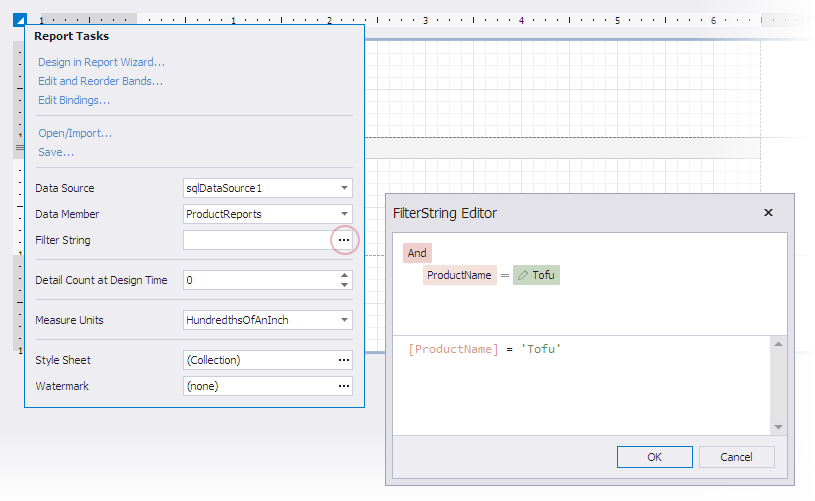
To specify a filter expression, invoke the report’s smart tag and click the ellipsis next to the Filter String editor. Construct the following criterion in the FilterString Editor window:
[ProductName] = 'Tofu'Optional: You can add a report parameter to allow users to specify the product at runtime. For more information, review the following help topic: Create a Report Parameter.
Add a Calculated Field to Calculate a Year Value
Click Field List in the Visual Studio XtraReports menu to invoke the Field List panel. Right-click any field and select Add Calculated Field:
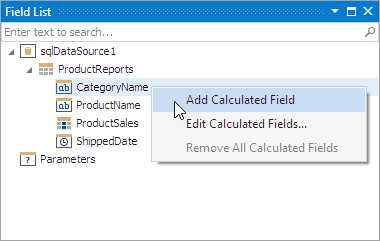
Right-click the newly created field and select Edit Expression to invoke the Expression Editor dialog:

Enter the following expression that calculates the year value for the
ShippedDatedata field:GetYear([ShippedDate])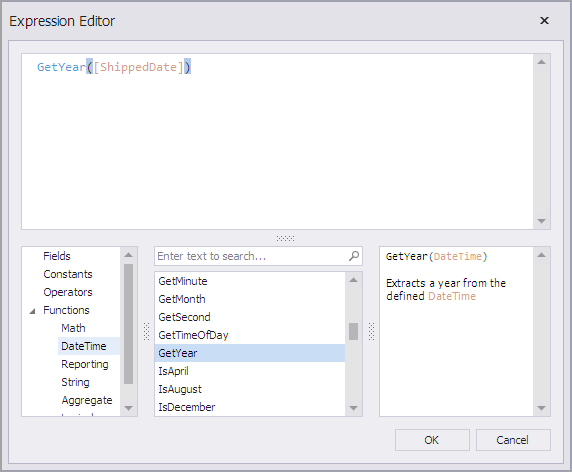
In the Properties window, rename the calculated field to
calcYear. Alternatively, right-click the field in the Field List and select Edit Calculated Fields to invoke the Calculated Field Collection Editor where you can specify the field name.
Group Data by Year
Use the Group and Sort panel to create a Group Header band associated with the
CategoryNamefield. If the panel is hidden, click Group and Sort in the XtraReports menu:
To create grouping criteria, click Add a Group and select the
calcYearfield from the invoked drop-down menu: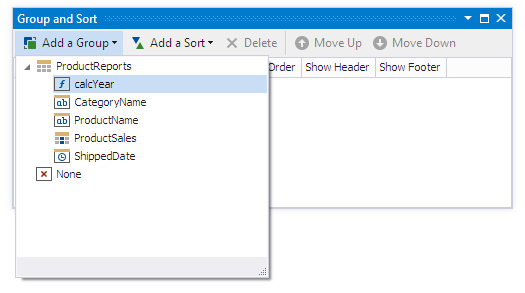
Select the Show Footer checkbox in the Group and Sort panel to add the Group Footer band:

Add Report Controls to Display Data
Drop fields from the Field List window to report bands to create data-bound XRLabel controls that display data:
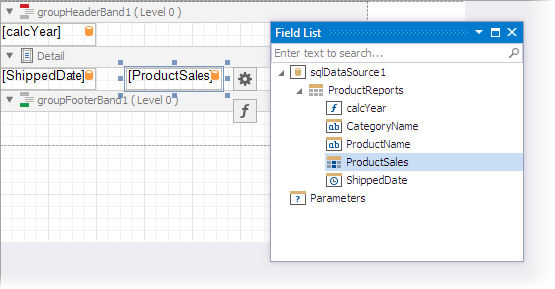
Use the Format String editor in the label’s smart tag to specify how to display data.
- Right-click the report’s design area and select Insert Band - Report Header to add the Report Header band.
Drop the ProductName field from the Field List window to the Report Header band to create a label. Use the label’s Format String editor to enter a string to display:
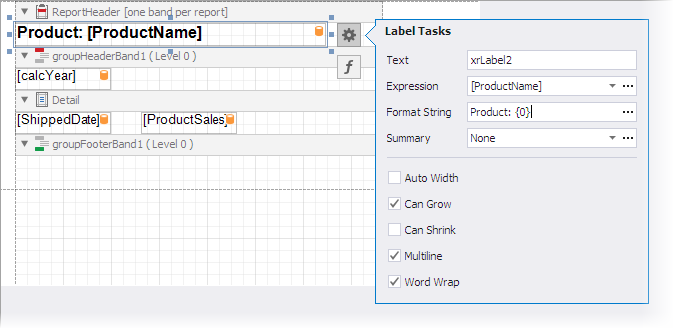
Add a Running Summary
Drop the XRLabel control from the Toolbox to the Group Footer band. Click the ellipsis next to the Summary editor in the label’s smart tag to invoke the Summary Editor:
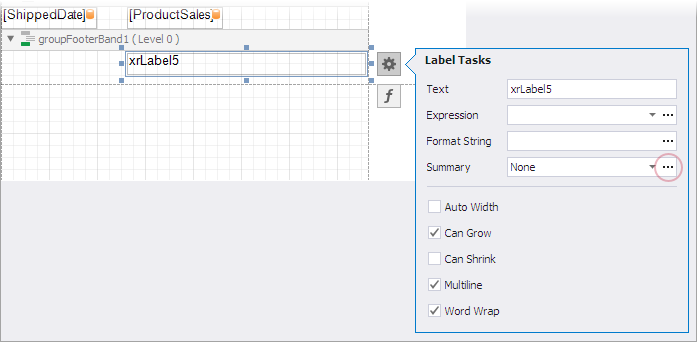
In the Summary Editor dialog you should set the following options:
- Summary running
- Specifies the summary calculation range (the entire report, current report group, or current document page). Select Report from the drop-down list.
- Summary function
- Specifies the summary function. When you hover over the information symbol, it shows a tooltip with information about the selected function. Select RunningSum from the drop-down list.
- Argument expression
- Specifies a data field. Select [Product Sales].
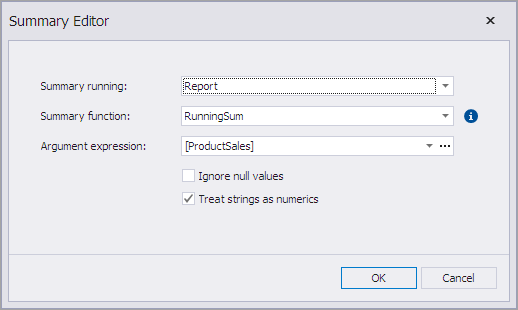
Click OK to close the dialog window.
The Summary Editor settings are automatically converted to an expression that is assigned to the label’s Expression property:
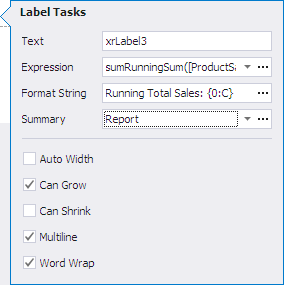
You can click the ellipsis next to the Expression editor to invoke the Expression Editor dialog:
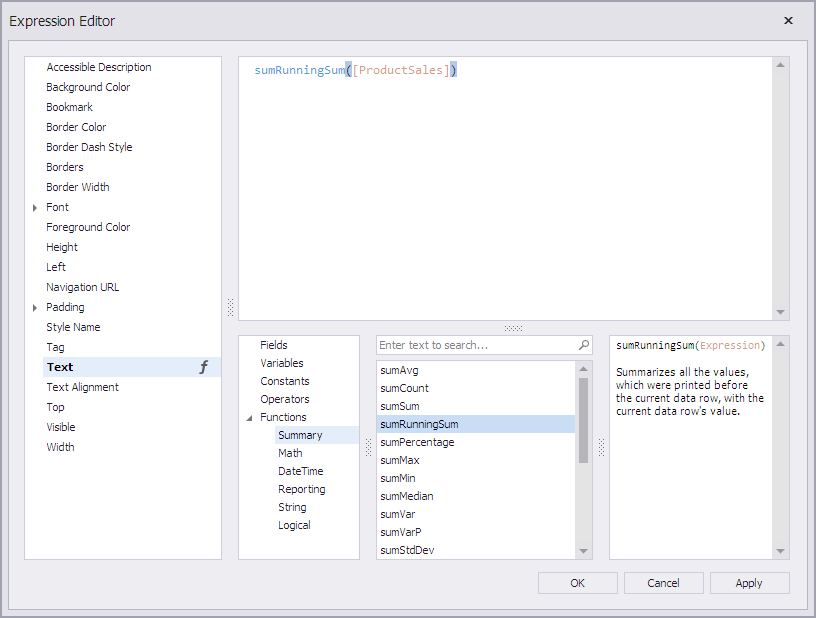
The dialog allows you to edit the summary expression and change the summary function. Review the following topic for a list of supported summary functions: Functions in Expressions.
Switch to the Preview tab to see the result.